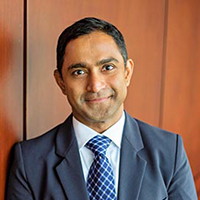International Fund
Quick Facts
| Investor | Institutional | |
| Ticker: | BUFIX | BUIIX |
| Daily Pricing: | ||
| As of 7/26/2024 | ||
| NAV: | $22.05 | $22.08 |
| $ Change: | $0.35 | $0.35 |
| % Change: |
1.61% | 1.61% |
| YTD: |
4.21% | 4.30% |
| Inception Date: | 9/28/2007 | 7/1/2019 |
| Expense Ratio: | 1.04% | 0.89% |
| Total Net Assets: | $1.05 Billion (6/30/24) | |
| Morningstar Category: | Foreign Large Cap Growth | |
| Benchmark Index: | FTSE All World Ex-US | |
|
Related Material: Fund Fact Sheet Q2 2024 PM Commentary Q1 2024 Portfolio Manager Q&A |
||
Morningstar Ratings





Overall Morningstar Rating™ of BUFIX based on risk-adjusted returns among 383 Foreign Large Growth funds as of 6/30/24
Fund Objective & Investment Philosophy
The investment objective of the Buffalo International Fund is long-term growth of capital. The International Fund invests primarily in equity securities of established companies that are economically tied to various countries throughout the world (excluding the U.S.).
For purposes of the International Fund’s investments, “foreign securities” means those securities issued by companies:
- Organized under the laws of, or with a principal office in, a country other than the U.S. and issue securities for which the principal trading market is in a country other than the U.S.; or
- That derive at least 50% of their revenues or profits from goods produced or sold, investments made, or services provided in a country other than the U.S., or have at least 50% of their assets in a country other than the U.S.
- Under normal circumstances, the International Fund does not expect its investments in emerging markets to exceed 35% of its net assets.
In selecting securities for the International Fund, the Fund managers use a bottom-up approach in choosing investments, seeking companies expected to experience growth based on the identification of long-term, measurable industry, technological, global or other trends. Companies are screened using in-depth, in-house research to identify those which the Fund managers believe have favorable attributes, including: attractive valuation, strong management, conservative debt, free cash flow, scalable business models, and competitive advantages.
In making portfolio selections the Fund managers will also consider the economic, political and market conditions of the various countries in which the Fund may invest.
When it comes to investing internationally, we believe our approach to stock selection is distinct. We are focused on finding good companies and aren’t constrained by benchmark alignment to countries or industries.
Our approach is based on finding companies with sound business models, exposure to long-term secular growth trends, and attractive risk/return growth and valuation characteristics, which we can own for the long-term.
Nicole Kornitzer, Portfolio Manager
Performance (%)
| As of 6/30/24 | 3 MO | YTD | 1 YR | 3 YR | 5 YR | 10 YR | Since Inception |
|---|---|---|---|---|---|---|---|
| BUFFALO INTERNATIONAL FUND - Investor | -2.56 | 2.74 | 4.79 | 0.29 | 7.59 | 7.06 | 5.54 |
| BUFFALO INTERNATIONAL FUND - Institutional | -2.51 | 2.83 | 4.97 | 0.44 | 7.76 | 7.22 | 5.70 |
| FTSE All World Ex-US Index | 1.13 | 5.73 | 12.20 | 1.08 | 6.29 | 4.52 | 3.22 |
| Lipper International Fund Index | 0.33 | 6.22 | 11.53 | 1.63 | 6.93 | 4.76 | 3.31 |
| As of 6/30/24 | 3 MO | YTD | 1 YR | 3 YR | 5 YR | 10 YR | Since Inception |
|---|---|---|---|---|---|---|---|
| BUFFALO INTERNATIONAL FUND - Investor | -2.56 | 2.74 | 4.79 | 0.29 | 7.59 | 7.06 | 5.54 |
| BUFFALO INTERNATIONAL FUND - Institutional | -2.51 | 2.83 | 4.97 | 0.44 | 7.76 | 7.22 | 5.70 |
| FTSE All World Ex-US Index | 1.13 | 5.73 | 12.20 | 1.08 | 6.29 | 4.52 | 3.22 |
| Lipper International Fund Index | 0.33 | 6.22 | 11.53 | 1.63 | 6.93 | 4.76 | 3.31 |
| 2013 | 2014 | 2015 | 2016 | 2017 | 2018 | 2019 | 2020 | 2021 | 2022 | 2023 | |
|---|---|---|---|---|---|---|---|---|---|---|---|
| BUFFALO INTERNATIONAL FUND - Investor | 19.29 | -2.04 | -0.45 | 3.19 | 29.33 | -8.85 | 28.02 | 19.10 | 18.21 | -21.79 | 18.33 |
| BUFFALO INTERNATIONAL FUND - Institutional | 19.46 | -1.89 | -0.30 | 3.34 | 29.53 | -8.71 | 28.20 | 19.24 | 18.42 | -21.65 | 18.47 |
| FTSE All World Ex-US Index | 15.62 | -3.04 | -4.46 | 5.12 | 27.47 | -13.87 | 22.20 | 11.52 | 8.66 | -15.22 | 16.20 |
3 Year Risk Metrics
| BUFIX vs FTSE All World Ex-US Index (As of 6/30/24) | |
|---|---|
| Upside Capture | 127.87 |
| Downside Capture | 115.34 |
| Alpha | -0.45 |
| Beta | 1.12 |
| Sharpe Ratio | -0.15 |
Hypothetical Growth of $10,000
Portfolio
Portfolio Characteristics
| (As of 6/30/24) | |
|---|---|
| # of Holdings | 81 |
| Median Market Cap | $46.40 B |
| Weighted Average Market Cap | $120.35 B |
| 3-Yr Annualized Turnover Ratio | 7.30% |
| Active Share | 89.48% |
Market Capitalization
As of 6/30/24. Market Cap percentages may not equal 100% due to rounding.
Top 10 Holdings
| Name of Holding | Ticker | Country | Sector | % of Net Assets |
|---|---|---|---|---|
| Novo Nordisk | NVO | Denmark | Health Care | 2.29 |
| Linde | LIN | Switzerland | Materials | 2.02 |
| Taiwan Semiconductor Manufacturing Co. | TSM | Taiwan | Information Technology | 1.99 |
| Schneider Electric SE | 483410 | France | Industrials | 1.95 |
| ICON | ICLR | Ireland | Health Care | 1.87 |
| Lonza Group AG | 733337 | Switzerland | Health Care | 1.83 |
| MercadoLibre, Inc. | MELI | Argentina | Consumer Discretionary | 1.79 |
| Renesas Electronics Corporation | 6723 | Japan | Information Technology | 1.66 |
| Astrazeneca | AZN | United Kingdom | Health Care | 1.61 |
| SAP SE | SAP | Germany | Information Technology | 1.58 |
| TOP 10 HOLDINGS TOTAL | 18.59% | |||
Sector Weighting
As of 6/30/24. Security weightings are subject to change and are not recommendations to buy or sell any securities. Sector Allocation may not equal 100% due to rounding.
Countries
| TOP 10 COUNTRIES | % of Portfolio Net Assets |
|---|---|
| France | 16.52% |
| Germany | 12.53% |
| United Kingdom | 12.18% |
| Switzerland | 12.09% |
| Japan | 10.83% |
| Ireland | 7.64% |
| Canada | 5.45% |
| Netherlands | 4.01% |
| Denmark | 3.85% |
| Taiwan | 2.75% |
| TOP 10 TOTAL | 87.85% |
| MARKET CLASSIFICATION | |
|---|---|
| Emerging Markets: | 9.09% |
| Developed Markets: | 90.91% |
Management
Commentary
Literature
| Buffalo International Fund Documents | Last Updated |
|---|---|
| Fact Sheet | 6/30/24 |
| Quarterly Q&A | 6/30/24 |
| Full Fund Holdings | 3/31/24 |
| Prospectus | 7/28/23 |
| Statement of Additional Information | 7/28/23 |
| Annual Report | 3/31/24 |
| Semi-Annual Report | 9/30/23 |
| Tax Guide - 2023 | 1/8/24 |
Fundamental Approach
We get to know the companies we invest in and learn how they run their business.
Top-Down & Bottom-Up
We identify Top-Down broad, secular growth trends and search for companies from the Bottom-Up.
Proprietary Philosophy
We construct our portfolios based on our own proprietary investment strategy.
Disciplined Investing
Sticking to our disciplined investment strategy ensures we maintain a consistent, balanced approach.
Morningstar Rating™
The Morningstar Rating™ for funds, or "star rating", is calculated for managed products (including mutual funds, variable annuity and variable life subaccounts, exchange-traded funds, closed-end funds, and separate accounts) with at least a three-year history. Exchange-traded funds and open-ended mutual funds are considered a single population for comparative purposes. It is calculated based on a Morningstar Risk-Adjusted Return measure that accounts for variation in a managed product's monthly excess performance, placing more emphasis on downward variations and rewarding consistent performance. The Morningstar Rating does not include any adjustment for sales loads. The top 10% of products in each product category receive 5 stars, the next 22.5% receive 4 stars, the next 35% receive 3 stars, the next 22.5% receive 2 stars, and the bottom 10% receive 1 star. The Overall Morningstar Rating™ for a managed product is derived from a weighted average of the performance figures associated with its three-, five-, and 10-year (if applicable) Morningstar Rating™ metrics. The weights are: 100% three-year rating for 36-59 months of total returns, 60% five-year rating/40% three-year rating for 60-119 months of total returns, and 50% 10-year rating/30% five-year rating/20% three-year rating for 120 or more months of total returns. While the 10-year overall star rating formula seems to give the most weight to the 10-year period, the most recent three-year period actually has the greatest impact because it is included in all three rating periods.
©2024 Morningstar, Inc. All Rights Reserved. The information contained herein: (1) is proprietary to Morningstar; (2) may not be copied or distributed; and (3) is not warranted to be accurate, complete or timely. Neither Morningstar nor its content providers are responsible for any damages or losses arising from any use of this information. Past performance is no guarantee of future results.
The Buffalo International Fund (BUFIX) received 3 stars among 383 for the 3-year, 3 stars among 331 for the 5-year, and 4 stars among 221 Foreign Large Growth funds for the 10-year period ending 6/30/24. Other share classes may have different performance characteristics based on risk-adjusted returns.



